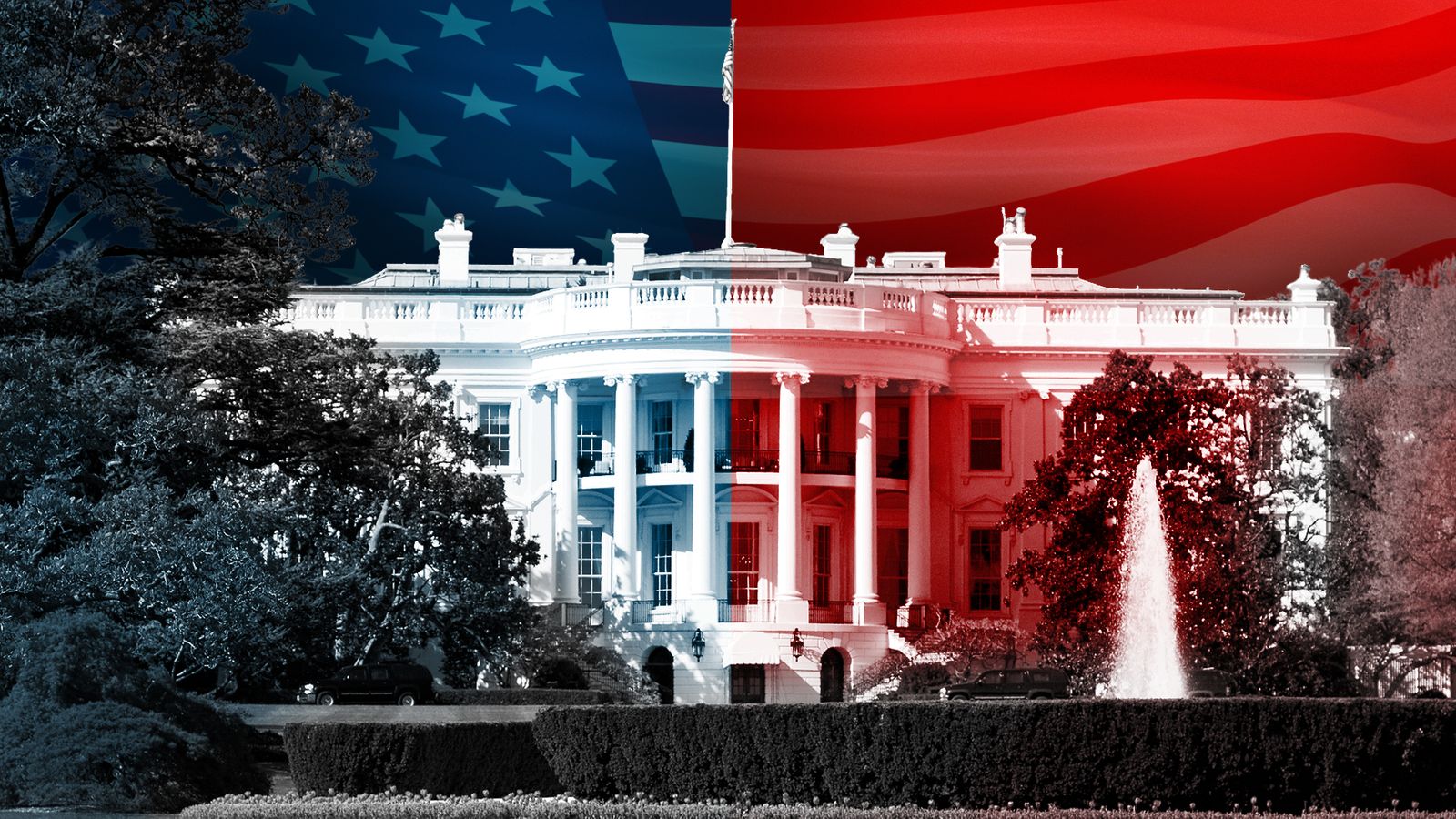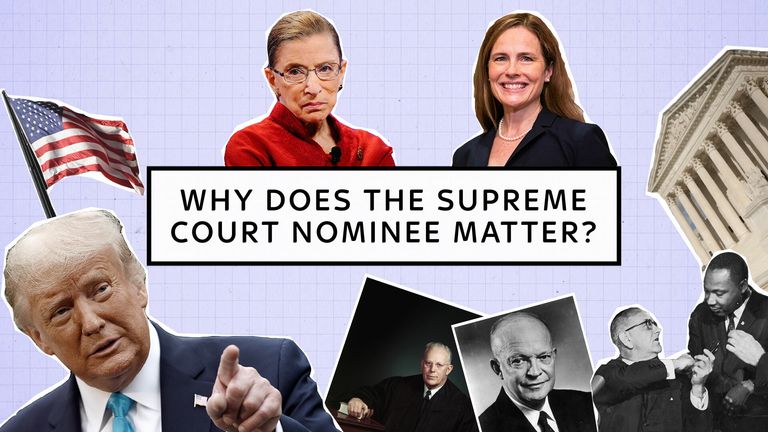The coronavirus pandemic has seen an unprecedented number of voters register to cast their ballot by mail – raising the very real possibility that we may not know who has won the US election for several days.
In 2016, Donald Trump was declared the winner of Wisconsin at 7.29am UK time on the day after polls closed, putting him over the magic 270 Electoral College votes he needed.
If the contest between Mr Trump and Joe Biden is not close and one of the candidates wins comfortably, we could expect to find out the result at a similar time.
But this is expected to be a more drawn-out election. Postal ballots take longer to count – and if battleground states cannot be called, or there are legal challenges on state counts, we could be in for a long night (or week).
When will we know?
We will get early results after the polls have closed in each state, which will give an indication of where the candidates stand.
They may not include mail-in ballots though, as this depends on when officials can start counting them.
Colorado, Hawaii, Oregon, Utah and Washington are holding all-mail elections. Here’s when the polls close elsewhere:
So how do you win the presidential election?
Americans don’t actually vote directly for who they want to be president and vice president.
Instead, they vote for “electors” – members of the Electoral College – who back their choice of candidate for those roles.
Each state has a number of electors depending on its population.
California, which has a population of nearly 40 million, has 55 votes in the Electoral College – while North Dakota, home to about 762,000 people, has just three votes.
There are a total of 538 electors in total – 435 representatives from Congress, 100 Senators and three additional voters from the District of Columbia.
Most states operate a winner-takes-all system, so if a candidate wins the most votes in a state, they get all the Electoral College votes.
The first candidate to 270 Electoral College votes wins the presidency.
The only exceptions are in Maine and Nebraska.
Maine has four electoral votes – two are given to the winner of the statewide vote, and one vote each goes to the winner in each of its two congressional districts. Nebraska has five votes. Again, two are given to the statewide winner, and one each to its three congressional districts.
The US Constitution does not require electors to follow the popular vote, but many US states have laws requiring them to do so.
In 2016, we had the phenomenon of “faithless electors” – defying they pledged to vote for. Two defected from Mr Trump and five defected from Mrs Clinton, with all voting for people not on the ballot.
In July, the US Supreme Court ruled that electors must follow the popular vote in states that have passed laws requiring them to do so.
What should we look for?
Most US states typically lean towards the Republicans or the Democrats.
But every presidential election, there are about 12 states that tip the balance towards one candidate – these are known as the battleground states or swing states.
This year, Sky News believes the 12 key states that will decide the White House race are Arizona, Georgia, Florida, Iowa, Minnesota, Michigan, Wisconsin, North Carolina, Texas, Nevada, Pennsylvania and Ohio.
There are 195 Electoral College votes going in these 12 crucial states. Minnesota and Nevada are currently defended by the Democrats, and the other 10 by the Republicans.
Assuming traditionally Democrat states vote the same way as expected, Joe Biden would stand on 216 votes and would require another 54 to reach 270.
Mr Trump is defending 127 votes, again assuming previously Republican states stay the same. That means he needs 143 more to win.
Keep your eyes on where those 12 swing states are going – particularly Florida, Georgia, Ohio and Pennsylvania.
What’s changed this time?
The pandemic means millions of Americans have decided to avoid standing in long queues to vote, and have switched to mail-in ballots.
The huge increase in use of mail-in ballots means it is much more likely this time around that the candidate who is leading early on could fall behind once later votes are counted.
Then there is the likely delay in counting ballots.
Some states accept mail-in votes that were postmarked on election day, but received afterwards – including battleground states North Carolina and Texas.
And simply verifying the ballots – requiring someone to match the affidavit signature on the outside of the envelope to that of the voter held on record – adds time to the process.
In states that heavily lean one way – such as California for the Democrats or Utah for the Republicans – a delay in getting the final results will likely not prevent the presidential race from being called in those states.
But battleground states including Pennsylvania and Michigan have eased rules on mail-in ballots because of the unprecedented demand. This means we could see delays – and one candidate may not be able to amass 270 Electoral College votes for some time.
Many states allow the verification process on votes to start before election day, as long as the ballots are not counted and no totals are released before polls close. This could help speed the process up.
How long could the delay be?
With some states allowing votes to be counted even if they are received after 3 November, this year’s election could be an extended one.
Each state must begin to certify its results from 10 November, although that could be delayed if there is a recount. Every state except California must have certified its result by 8 December.
Those electors then cast their votes on 14 December and send them to Washington DC.
The last time the result wasn’t clear? In 2000, George W Bush was only confirmed as the winner of the election following a Supreme Court ruling to end recounts in Florida a month after the election. The state had been called for both Mr Bush and Al Gore at various points.
Mr Trump has refused to say whether he will accept the outcome of the election, and has hinted that the outcome might have to be settled by the Supreme Court.
He has also repeatedly claimed that the increase in mail-in voting will lead to widespread fraud. There is no evidence to support this. Mr Trump has also called for the federal court system to ensure the winner of the election is called just hours after polls close, despite the rules allowing mail-in ballots to be counted days afterwards.
A close count in key battleground states could result in litigation over voting and ballot counting procedures.
Those cases could eventually reach in the US Supreme Court as they did in 2000, with George W Bush prevailing over Mr Gore by just 537 votes in Florida.
Amy Coney Barrett’s confirmation as a Supreme Court justice has created a 6-3 conservative majority in America’s highest court, which could favour Mr Trump if it is required to weigh in on a contested election.
What if there’s a tie?
In the unlikely event both candidates finish with 269 Electoral College votes, it’s up to Congress to decide who is in the White House. This is known as a “contingent election”, and also applies if neither can get 270 votes.
The House would vote on the president. Each of the 50 states would have a single vote from the three candidates who received the most popular votes. A majority of 26 would be needed to win.
Bear in mind the Democrats currently hold the majority in the House, but they’re all up in elections on 3 November.
The Senate would decide who the vice president is. Each senator would have a vote on the two candidates with the most popular votes, with a majority of 51 needed to win.
The Republicans currently hold the Senate control, but again a third are up for election so that could change.
Those decisions would have to be completed by 20 January, when the Constitution determines that the term of the current president ends.
Under the Presidential Succession Act, if Congress still hasn’t determined a presidential or vice presidential winner by then, Speaker of the House Nancy Pelosi would serve as acting president.
There have only been three contingent elections – in 1800, 1824 and 1836.
What else is at stake?
It’s not just the presidential and vice presidential race that is up for grabs, although most of the attention is locked on to Mr Trump and Mr Biden.
Voters will also be deciding on members of Congress and some of the Senate seats are also up for election on 3 November.
All 435 seats in the House are being contested. Currently the Democrats have control of the House with 232 seats, and will be looking to maintain control. The Republicans hold 197, there is one Libertarian and currently five vacancies after resignations or deaths of representatives.
Some 33 of the Senate seats are being contested in 2020 too. The Republicans control the Senate currently, with 53 seats, and the Democrats have 45. Two independent senators currently side with the Democrats. In the event of a tie in the Senate – the vice president tips the balance to his or her party.



